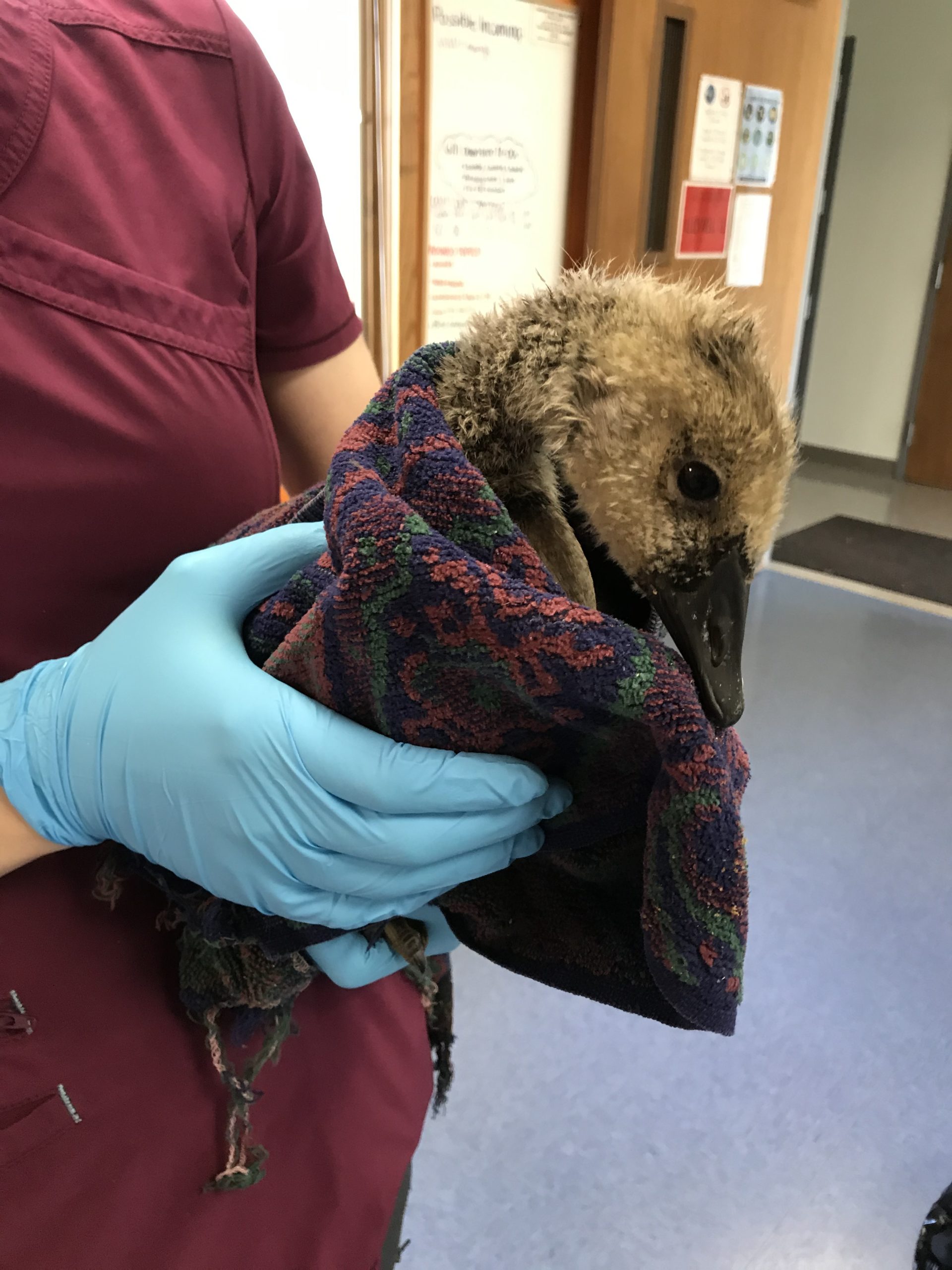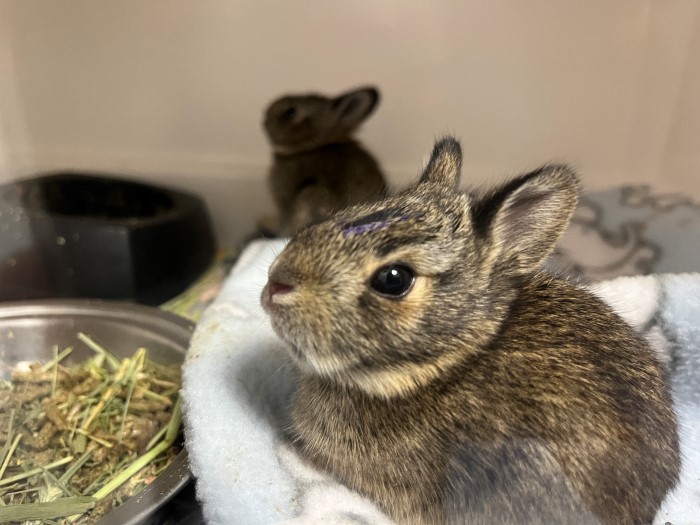On June 10, 2020, a juvenile Canada goose presented to the clinic after being abandoned by the rest of its flock. Upon first examination, we noted he was lethargic, had a few superficial scabs on his head and neck, and was mildly dehydrated.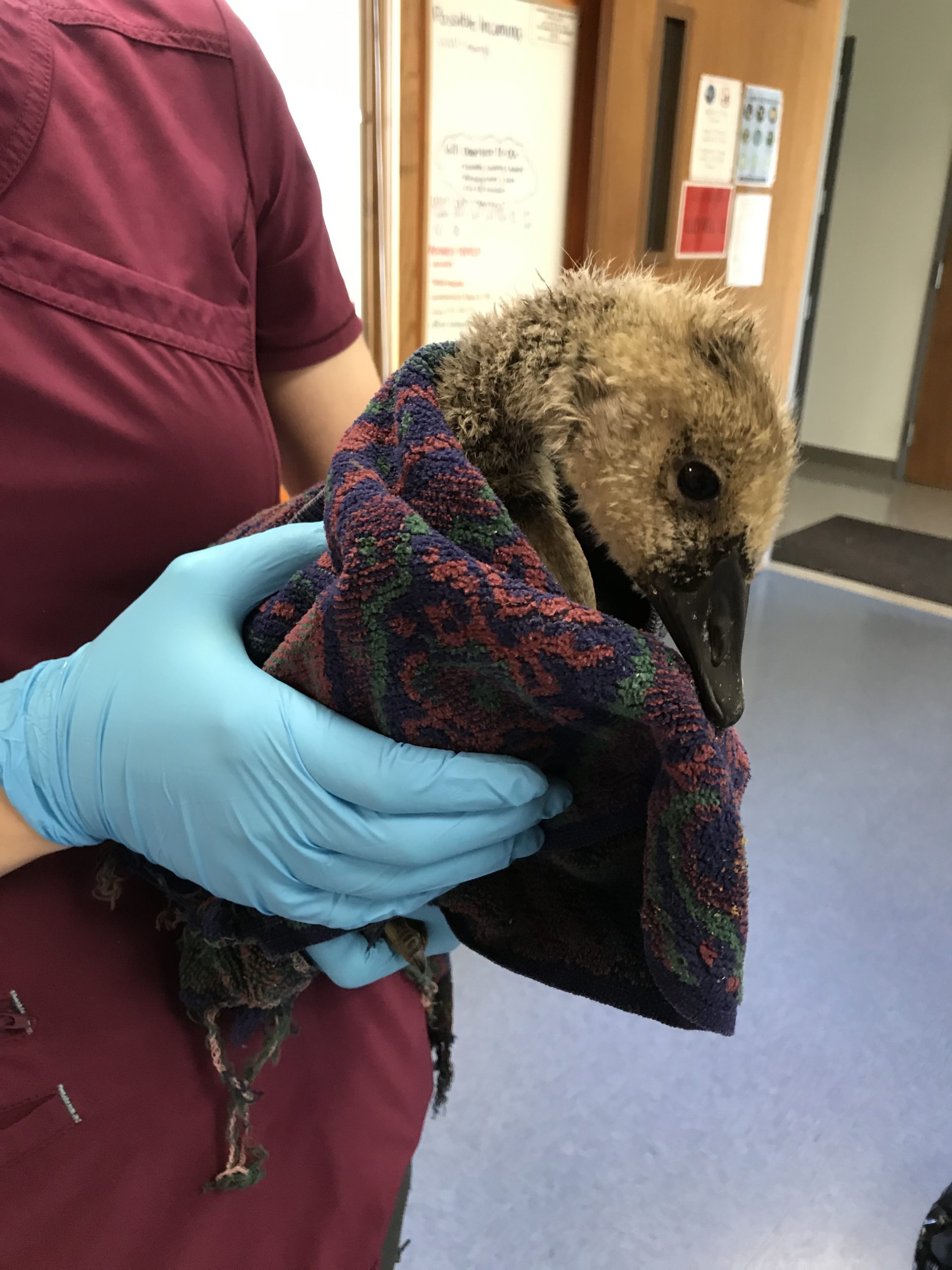
After cleaning his wounds with a dilute disinfecting solution, we began him on a course of pain medications and antibiotics. We also administered subcutaneous fluids to correct his dehydration. We also collected a blood sample to run diagnostics and better evaluate his condition. One of our concerns for wild birds presenting with severe lethargy is lead poisoning, however this test came back negative. Next, we determined his PCV/TP values. PCV, or packed cell volume, tells us the percentage of red blood cells to total blood volume, which is helpful in determining if the patient is anemic. Most birds have a PCV of about 40 – 60%, and this goose was mildly anemic at 35%. The TP, or total protein, tells us the amount of proteins in the blood serum and can range from 3.5-5.5 mg%. Our patient had a TP of 4.6 mg% which was in the normal range.
After handling for his exam, the goose defecated dark purple-black, liquid feces. The medical term for this is melena and is usually seen when there is bleeding in the upper gastrointestinal tract. The blood gets digested and turns black, thus producing black feces. We started him on a medication to coat the stomach and acts as a sort of bandage to prevent further damage.
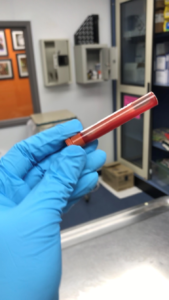 Concerned as to the cause of this new symptom, we took a closer look at some of our collected samples. Nearly two hours after collecting blood from this goose, it still had shown no signs of clotting in the blood tube – something that normally only takes a few minutes! With this new information, we were suspicious of a coagulopathy (inability to form blood clots), most likely from rodenticide poisoning. Common rodenticides deplete the body of vitamin K which is essential in forming clotting factors in blood. We gave him an injectable form of vitamin K to kickstart clotting factor regeneration.
Concerned as to the cause of this new symptom, we took a closer look at some of our collected samples. Nearly two hours after collecting blood from this goose, it still had shown no signs of clotting in the blood tube – something that normally only takes a few minutes! With this new information, we were suspicious of a coagulopathy (inability to form blood clots), most likely from rodenticide poisoning. Common rodenticides deplete the body of vitamin K which is essential in forming clotting factors in blood. We gave him an injectable form of vitamin K to kickstart clotting factor regeneration.
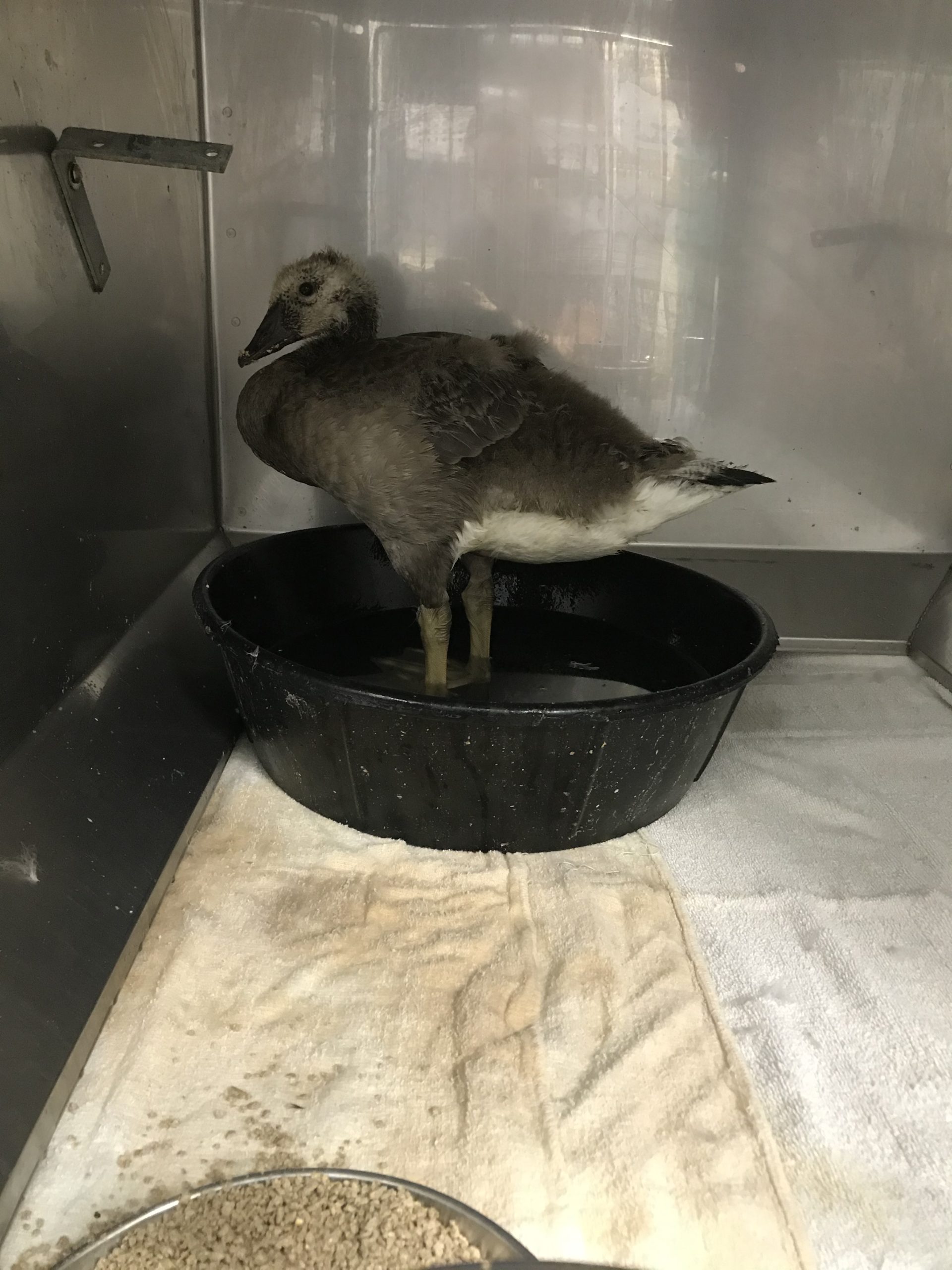 Our goose responded beautifully to his medications! Within a week, his melena resolved and the soft tissue injuries were almost completely healed. His alertness also drastically improved. At his initial exam, this goose was hanging his head and could not stand on his own. Thanks to his treatments, one week later he was standing and walking around his cage.
Our goose responded beautifully to his medications! Within a week, his melena resolved and the soft tissue injuries were almost completely healed. His alertness also drastically improved. At his initial exam, this goose was hanging his head and could not stand on his own. Thanks to his treatments, one week later he was standing and walking around his cage.
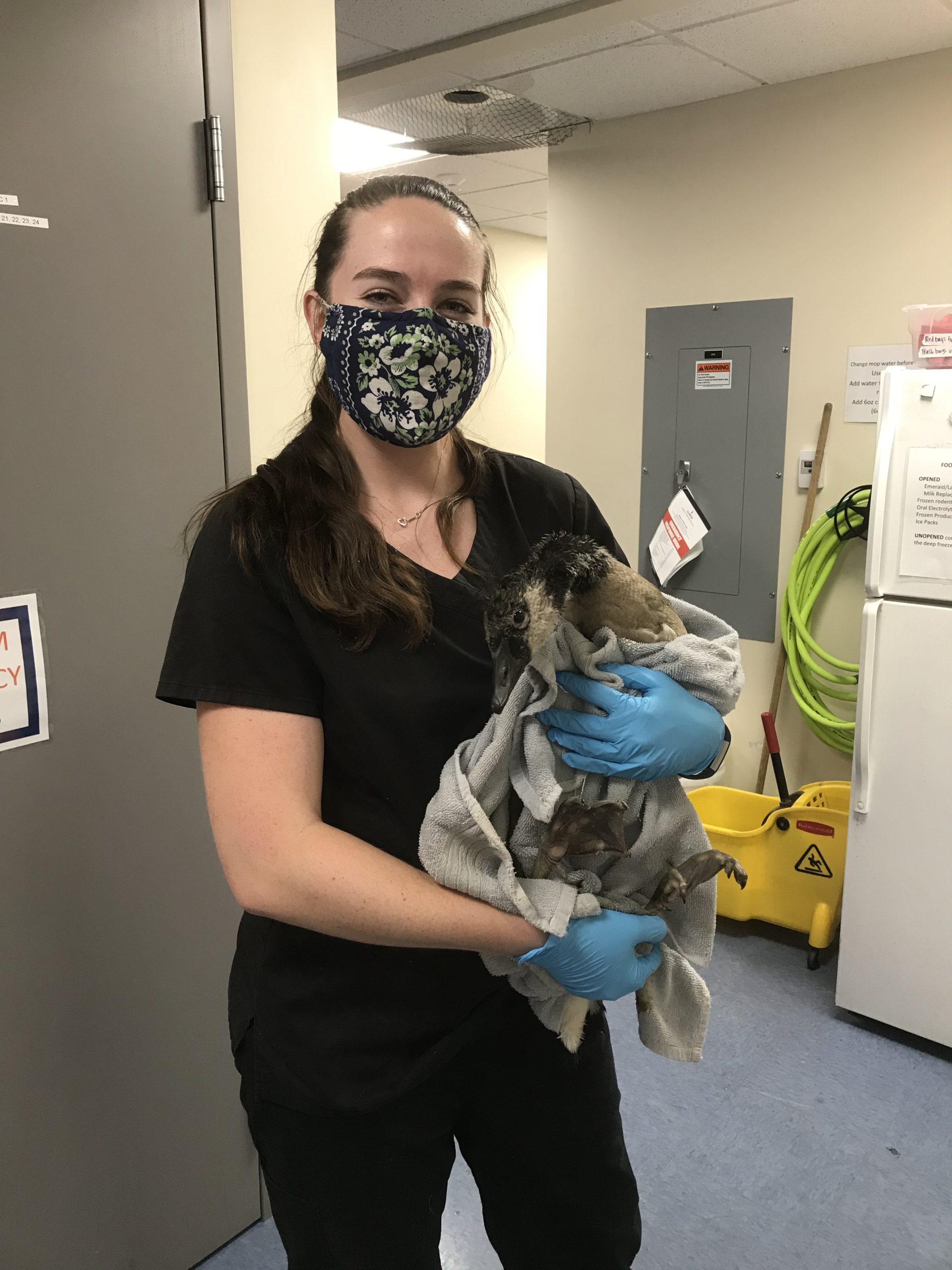 Rodenticide poisoning can take a month to fully recover from. As he had presented as a gosling, his one month stay at the WMC resulted in this goose more than doubling in both size and feistiness! He loved splashing in his tub of water and hissing at us when we come to give him food and medications. We love it when our patients get their spunk back! Recheck bloodwork showed full improvement – his PCV had increased to normal range and his blood clotted within an expected amount of time for his species.
Rodenticide poisoning can take a month to fully recover from. As he had presented as a gosling, his one month stay at the WMC resulted in this goose more than doubling in both size and feistiness! He loved splashing in his tub of water and hissing at us when we come to give him food and medications. We love it when our patients get their spunk back! Recheck bloodwork showed full improvement – his PCV had increased to normal range and his blood clotted within an expected amount of time for his species.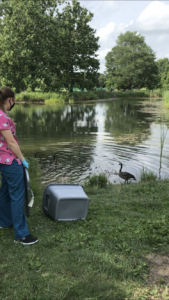
Nearing the end of his stay, this goose began to grow normal adult feathers. We wanted to release him with another flock of geese so they could teach him how to be a goose, and we set out to find a suitable water source and family group for our patient. We identified a location near where he was found and released him into the pond. As exciting for us as it was for him, an entire flock of geese welcomed him home!

